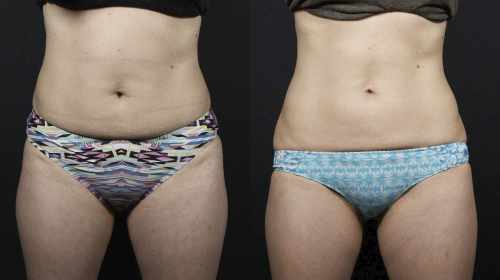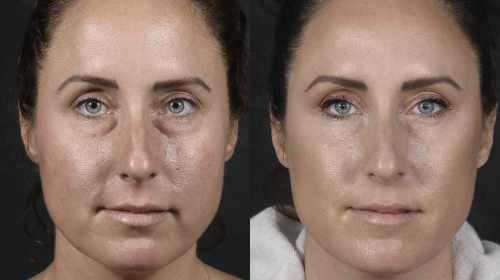 Facials are among the most popular medical spa treatments because of the amazing results they can provide clientele in terms of improving their skin. Simply put, facials can be considered beauty treatments for your skin.
Facials are among the most popular medical spa treatments because of the amazing results they can provide clientele in terms of improving their skin. Simply put, facials can be considered beauty treatments for your skin.
With so many different facial treatments out there, it is really hard to decipher what facial is the right one for you. That is why it is so important to consult with a medical esthetician, like ours, who can guide you to the right treatment choice based on a personalized assessment of your skin. We have provided the following information to help our clientele better understand the basics and nuances of facial treatments.
Understanding Facials
Facial treatments involve use of various products, massage and/or spa equipment to help rejuvenate the skin. What all of them should have in common is that you should feel relaxed and refreshed following this classic, pampering medical spa procedure.
A facial usually begins with cleansing of the skin to help remove residual makeup while preparing the skin for any treatments.
Massage is inviting step that is often included during a facial treatment. Facial massage will typically extend into the neck and shoulder region and sometimes along the back. To a certain degree, the massage component of a facial helps in a manner similar to acupressure or lymphatic drainage.
Application of some type of skincare product is one of the essential steps during a facial. The products used in facials range from soothing topical serums to activating chemicals that actually peel the skin. Medical estheticians experienced in skin enhancement treatment will typically recommend any number of specialized serums, which will help target specific skin conditions. These include the individual skin types seen commonly, such as dry skin, oily skin, more aged skin, and acne-prone skin.
The most common topical agent used to exfoliate dead skin is a chemical acid – thus the ever popular term ‘chemical peel’ when discussing skin exfoliation. There are a wide range of chemicals used to peel the skin – with most esthetician-grade peels being on the much milder and safer end of the spectrum. The chemicals are applied directly to the skin and allow the dead, outer layers to gently peel off in a controlled manner. As the skin regenerates from underneath, the complexion is improved with a new, smoother, more radiant glow.
Some of the most common terms and names you will hear in relation to facial treatments reference their intention. For instance, you will often hear the term ‘copper peptide facial’ in reference to some treatments intended to help repair damaged skin. This is based on research that shows copper-containing substances have some reparative capacity when it comes to skin that is damaged and/or healing. And anything with the term ‘collagen facial’ implies that the esthetic skin treatment will help in terms of anti-aging effects by promoting new collagen production.
Other facials will be named based on use of a particular technology or piece of equipment incorporated as part of the treatment. Microdermabrasion is probably the most well-known type of facial within this category. A microdermabrasion facial involves use of fine, tiny grains of crystal to help resurface the skin while removing the dead, outer layers. Galvanic, or microcurrent, facials are also becoming very popular in medial spas. A microcurrent facial incorporates a low electrical energy current that aids in improving facial muscle tone along with improved circulation to the skin. More recently, oxygen facials have been introduced, which utilizes high pressure to push rejuvenating oxygen into the upper layers of the skin. In terms of more specialized facials, some medical spas will offer a ‘Blu light’ facial. This type of facial treatment includes use of an actual blue wavelength light that helps to improve acne, which is derived from medical studies that show known benefits of blue light as it targets the bacterial source of acne-prone skin.
At the conclusion of your facial, a hydrating mask is often times applied to help promote optimal moisturizing of your skin. Most facials will take, on average 60-90 minutes.
Laser Facials
Many medical spas will offer a laser facial as an alternative to a chemical or mechanical facial treatment. Laser facials utilize the technology of any number of different laser devices that can rejuvenate the skin by stimulating some type of change in the outer layers.
The Nd:YAG laser, for instance, is a popular choice for many medical spas because the laser bypasses the skin surface and penetrates down through the skin. As the laser beam targets the deeper skin layers where biologically many skin conditions arise, issues like pigmentation (sunspots and melasma included) and redness can be improved. One of the nice byproducts of the Nd:YAG laser is improved acne since the laser also hones in on areas of inflammation that contribute to blemish formation.
Fractionated laser facials are a different type of treatment that is commonly done in the medical spa setting. These lasers are a bit different than the Nd:YAG in that they do cause some visible disruption of the superficial skin layer. These fractionated lasers are the same ones that plastic surgeons use on much higher power to fully resurface skin that is more extensively damaged by the aging process and sun exposure. In the medical spa setting this same laser is dialed down to more fractionated, or less powerful, so that milder treatments can be done to take away the outer layer of damaged skin, which includes unwanted discoloration (dyschromias), wrinkle formation and fine lines. As a new layer of skin heals in, the end result is a more youthful, rejuvenated complexion.
The Décolleté
In San Diego, there is a significant number of clientele who also have a sun-damaged and/or aged décolleté that would benefit greatly from medical spa treatments. Although technically not a facial, the same type of treatments used on the face can be applied to the décolleté to provide a more rejuvenated and youthful look to this area.
Learn about Dr. Hilinski’s facial plastic and reconstructive surgery services.



